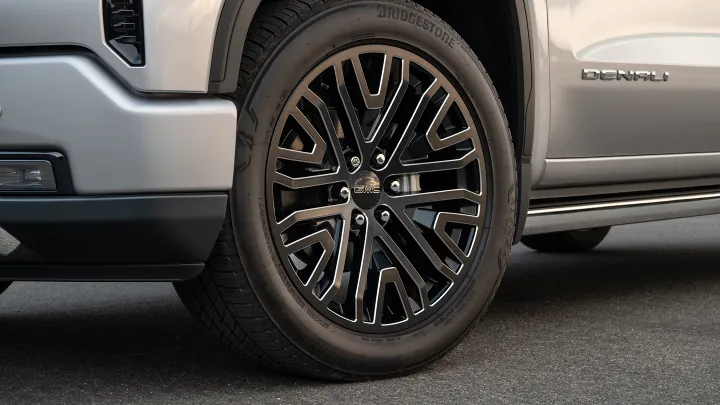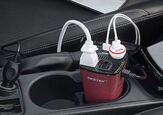Right-To-Repair Legislation Could Be Revived By Bipartisan Coalition

Right-to-repair advocates believe that if you own a car, you should be able to have it fixed anywhere, not just at the dealer’s service department. Many in the auto industry have fought back against these proposals because they would force automakers and other companies to provide diagnostic tools and other resources to independent repair shops. Some states have passed right-to-repair legislation, but Congress appears ready to take up a bill that could make right-to-repair the law of the land.
The bill is a bipartisan effort that was written by the Society of Collision Repair Specialists, the Automotive Service Association, and the Alliance for Automotive Innovation. The groups sent a letter to Congress earlier this month outlining the proposal, which is called the Right to Equitable and Professional Auto Industry Repair Act (REPAIR).
Prior legislation on the subject hasn’t made it through the legislative process, but this bill’s bipartisan backing is an encouraging sign in today’s ultra-polarized political climate. If successful, the legislation would help individual repair shops gain access to automakers’ elaborate vehicle diagnostic tools and software. It also addresses cybersecurity with measures aimed at preventing sensitive data from falling into the wrong hands.
Without right-to-repair laws, vehicle owners are often forced to rely on expensive dealer services due to the complex electronics in many new models. Beyond the costs, some people living in rural areas have little to no dealer access, making it exceedingly difficult to get repairs when needed.
[Images: Ford, GMC, Honda]
Become a TTAC insider. Get the latest news, features, TTAC takes, and everything else that gets to the truth about cars first by subscribing to our newsletter.

Chris grew up in, under, and around cars, but took the long way around to becoming an automotive writer. After a career in technology consulting and a trip through business school, Chris began writing about the automotive industry as a way to reconnect with his passion and get behind the wheel of a new car every week. He focuses on taking complex industry stories and making them digestible by any reader. Just don’t expect him to stay away from high-mileage Porsches.
More by Chris Teague
Latest Car Reviews
Read moreLatest Product Reviews
Read moreRecent Comments
- MaintenanceCosts The Truth About Isuzu Troopers!
- Jalop1991 MC's silence in this thread is absolutely deafening.
- MaintenanceCosts Spent some time last summer with a slightly older Expedition Max with about 100k miles on the clock, borrowed from a friend for a Colorado mountain trip.It worked pretty well on the trip we used it for. The EcoBoost in this fairly high state of tune has a freight train feeling and just keeps pulling even way up at 12k ft. There is unending space inside; at one point we had six adults, two children, and several people's worth of luggage inside, with room left over. It was comfortable to ride in and well-equipped.But it is huge. My wife refused to drive it because she couldn't get comfortable with the size. I used to be a professional bus driver and it reminded me quite a bit of driving a bus. It was longer than quite a few parking spots. Fortunately, the trip didn't involve anything more urban than Denver suburbs, so the size didn't cause any real problems, but it reminded me that I don't really want such a behemoth as a daily driver.
- Jalop1991 It seems to me this opens GM to start substituting parts and making changes without telling anyone, AND without breaking any agreements with Allison. Or does no one remember Ignitionswitchgate?At the core of the problem is a part in the vehicle's ignition switch that is 1.6 millimeters less "springy" than it should be. Because this part produces weaker tension, ignition keys in the cars may turn off the engine if shaken just the right way...2001: GM detects the defect during pre-production testing of the Saturn Ion.2003: A service technician closes an inquiry into a stalling Saturn Ion after changing the key ring and noticing the problem was fixed.2004: GM recognizes the defect again as the Chevrolet Cobalt replaces the Cavalier.fast forward through the denials, driver deaths, and government bailouts2012: GM identifies four crashes and four corresponding fatalities (all involving 2004 Saturn Ions) along with six other injuries from four other crashes attributable to the defect.Sept. 4, 2012: GM reports August 2012 sales were up 10 percent from the previous year, with Chevrolet passenger car sales up 25 percent.June 2013: A deposition by a Cobalt program engineer says the company made a "business decision not to fix this problem," raising questions of whether GM consciously decided to launch the Cobalt despite knowing of a defect.Dec. 9, 2013: Treasury Secretary Jacob Lew announces the government had sold the last of what was previously a 60 percent stake in GM, ending the bailout. The bailout had cost taxpayers $10 billion on a $49.5 billion investment.End of 2013: GM determines that the faulty ignition switch is to blame for at least 31 crashes and 13 deaths.It took over 10 years for GM to admit fault.And all because an engineer decided to trim a pin by tenths of a millimeter, without testing and without getting anyone else's approval.Fast forward to 2026, and the Allison name is no longer affiliated with the transmissions. You do the math.
- Normie I'd hate to have to actually use that awkwardly mounted spare tire in a roadside fix scenario. Bumper jack? Tote around a 50 lb. floor jack? That's a high ridin' buggy!




































Comments
Join the conversation
I mean, thankfully, California is all that really matters…
It seems like it would be less complicated actually than a normal hybrid. Because your drive system is always an electric motor and batteries and you don't have to deal with merging power from a gas engine and an electric engine smoothly.